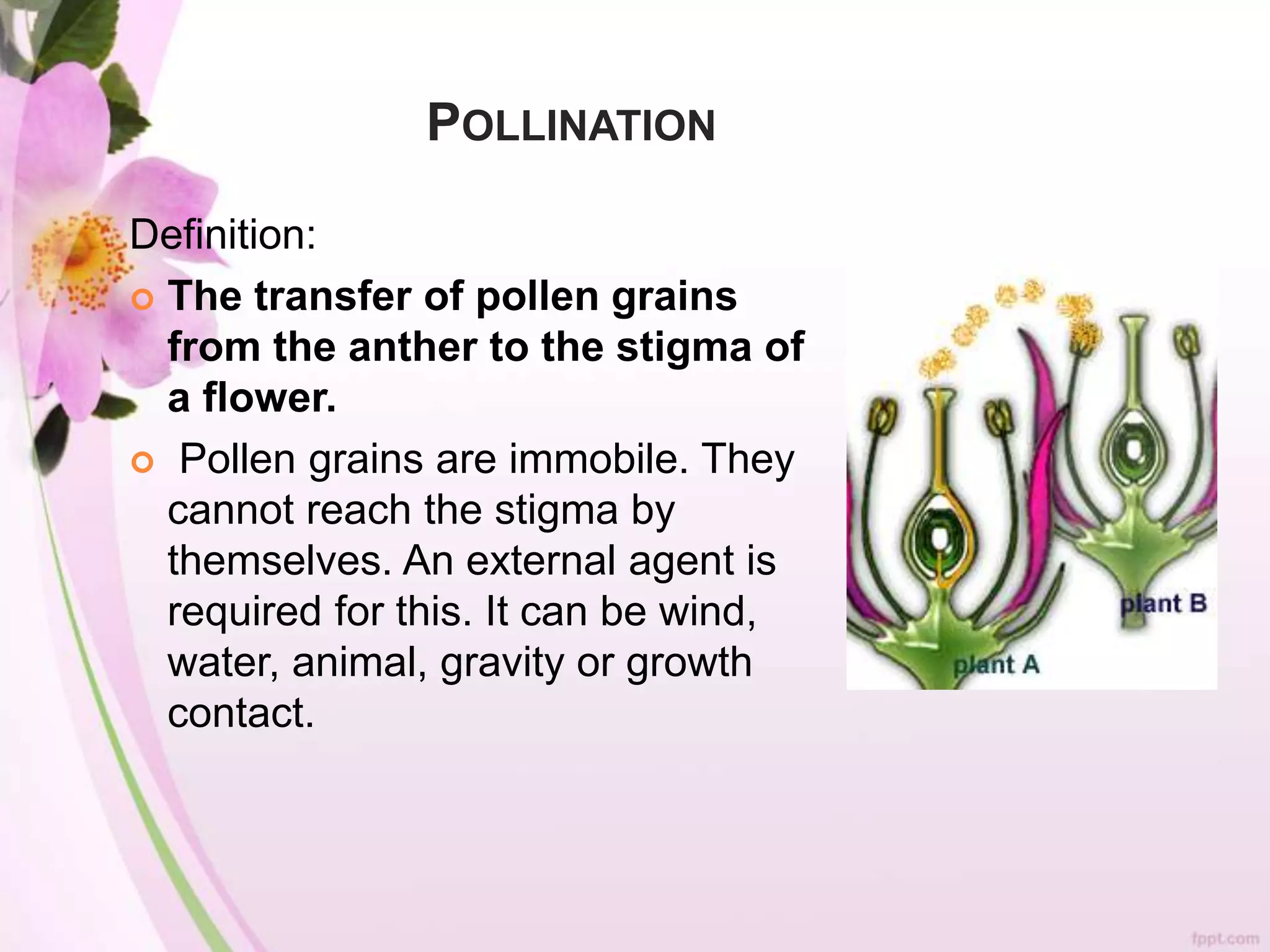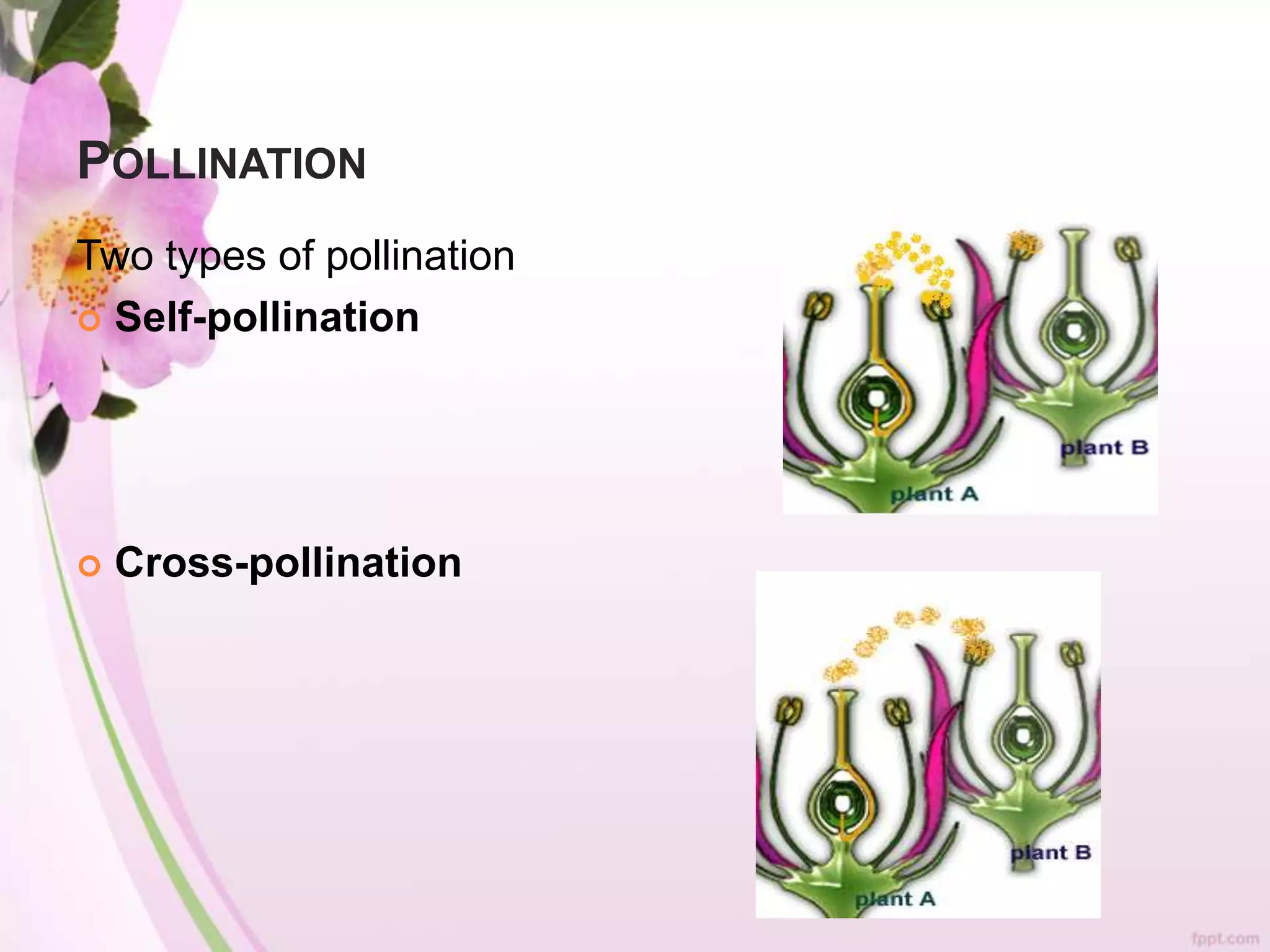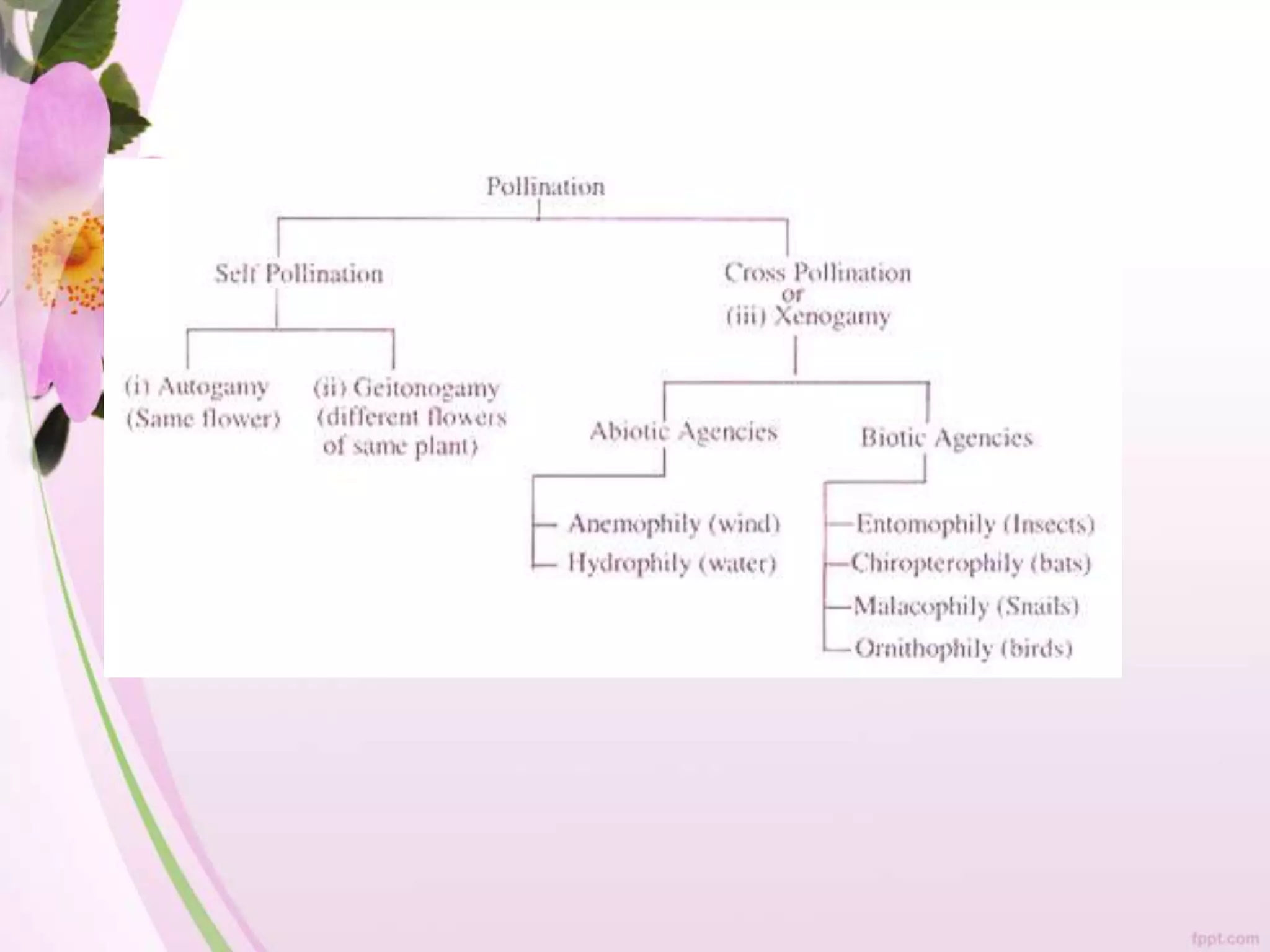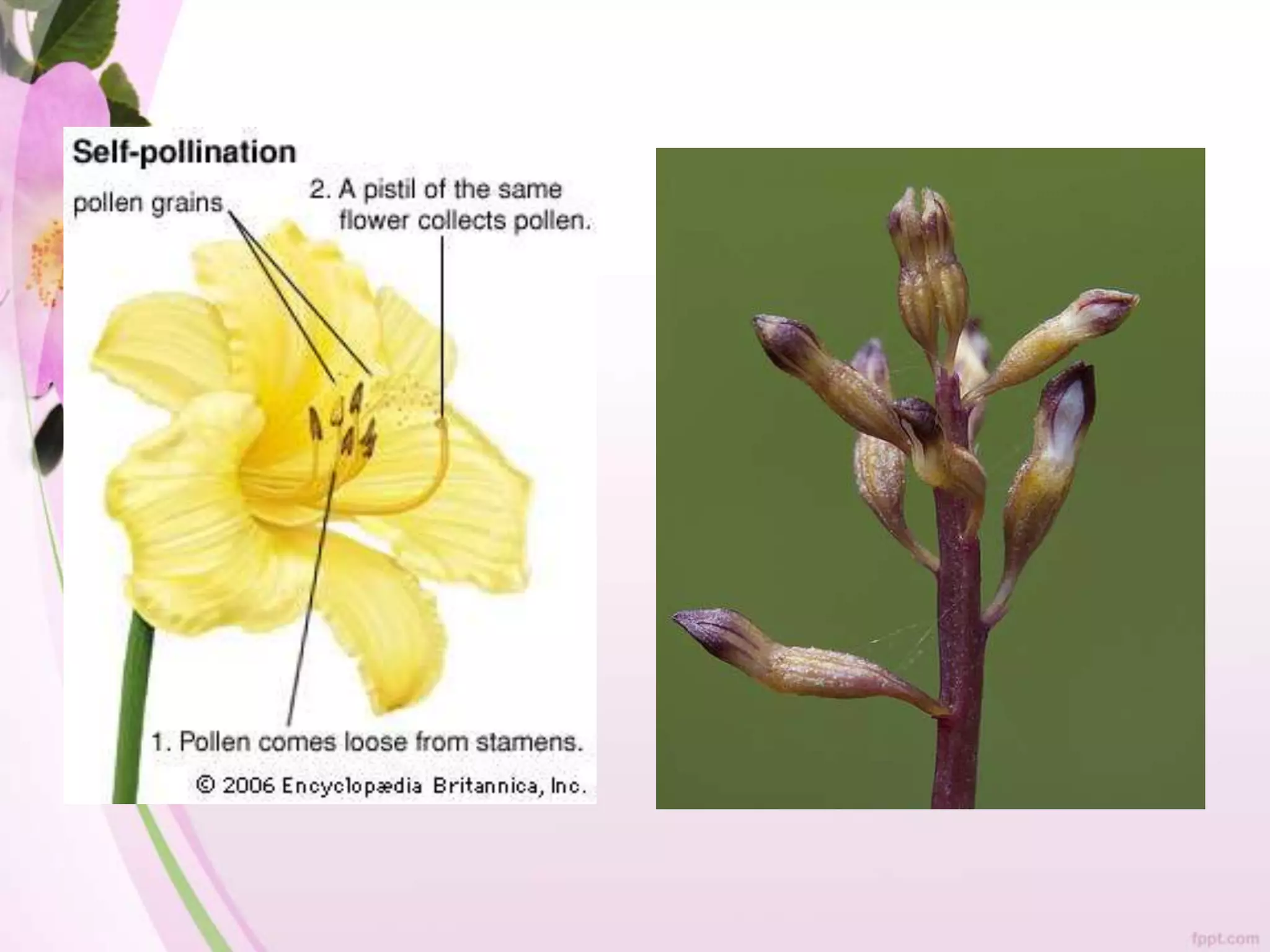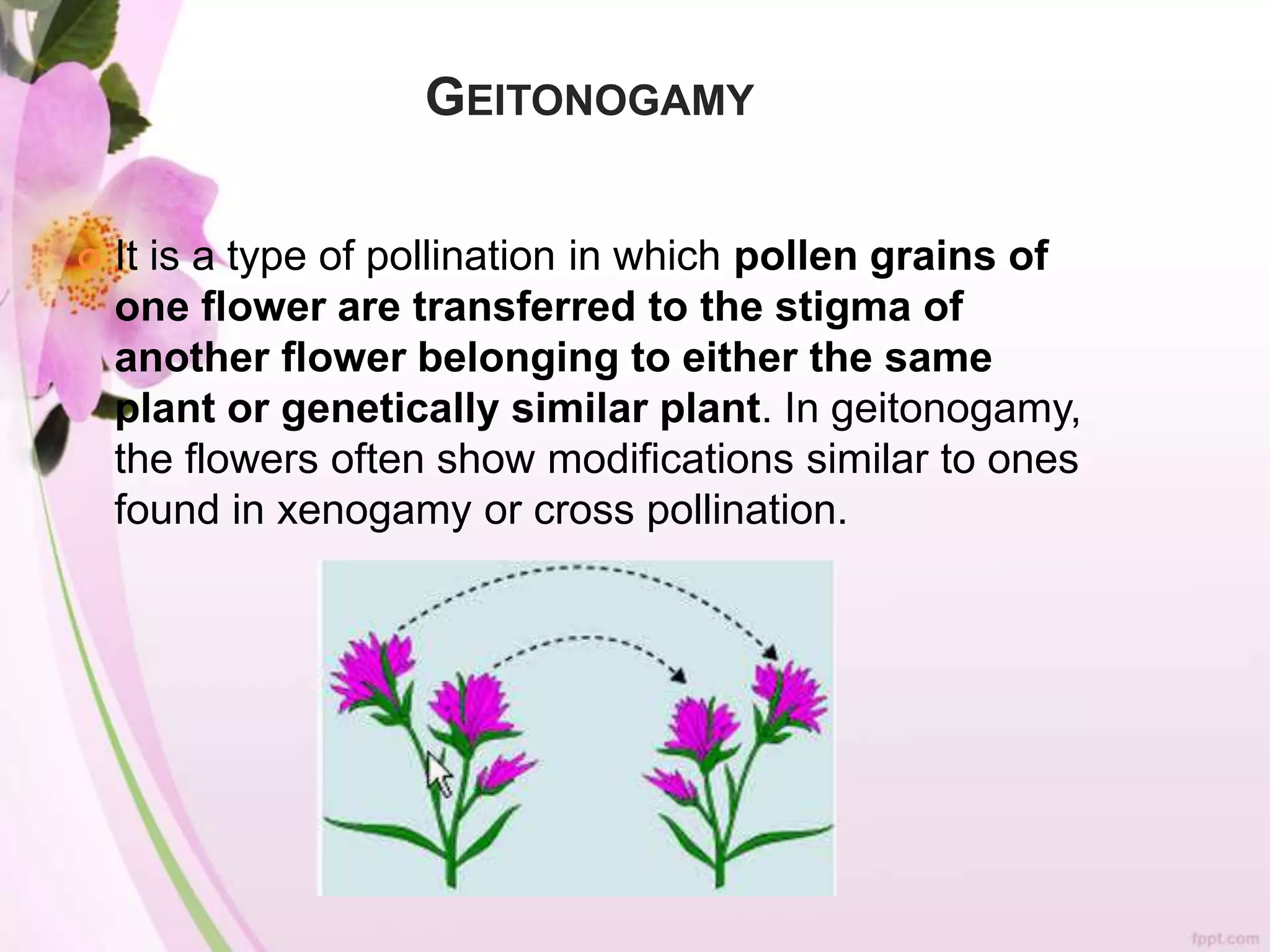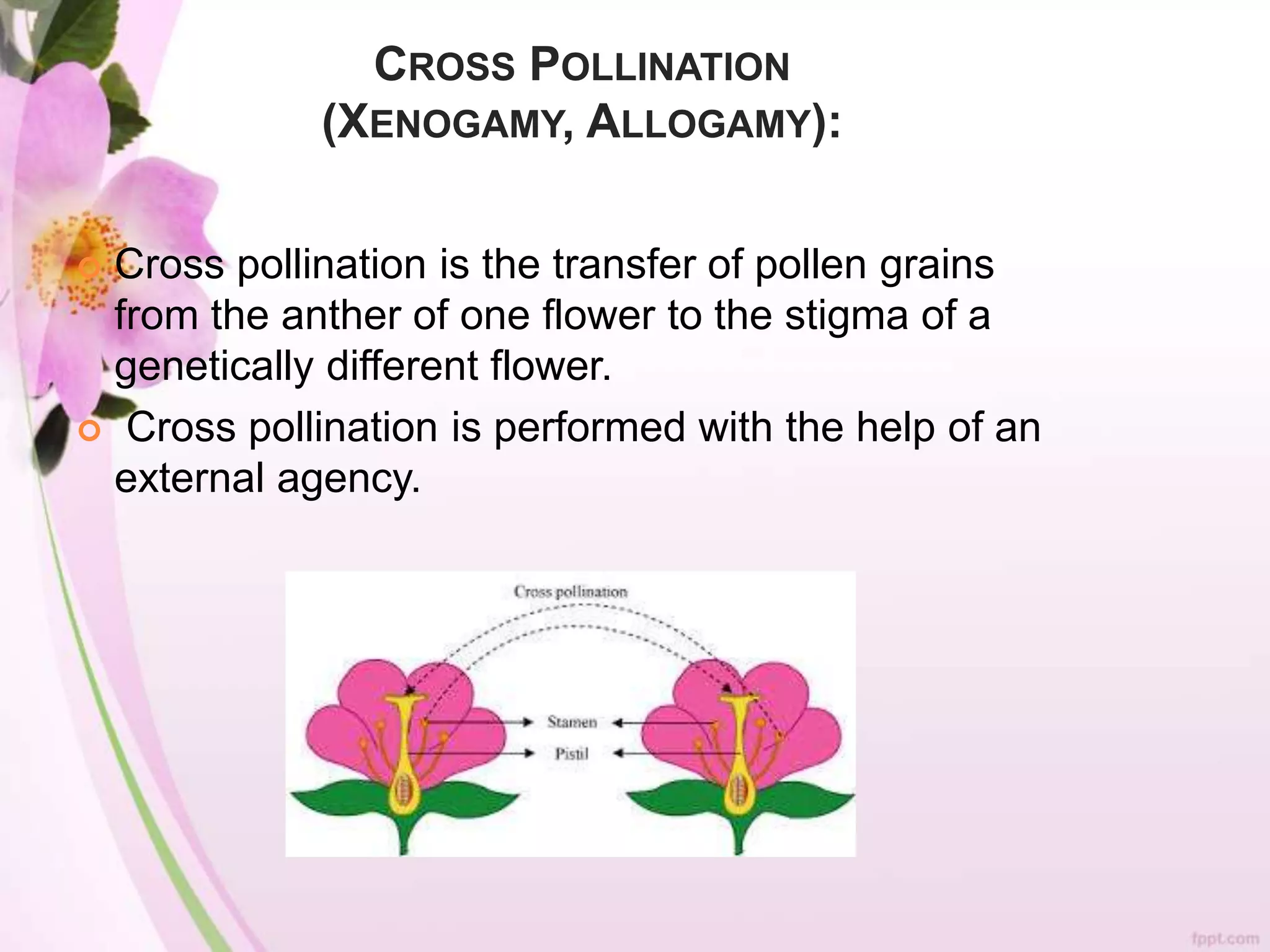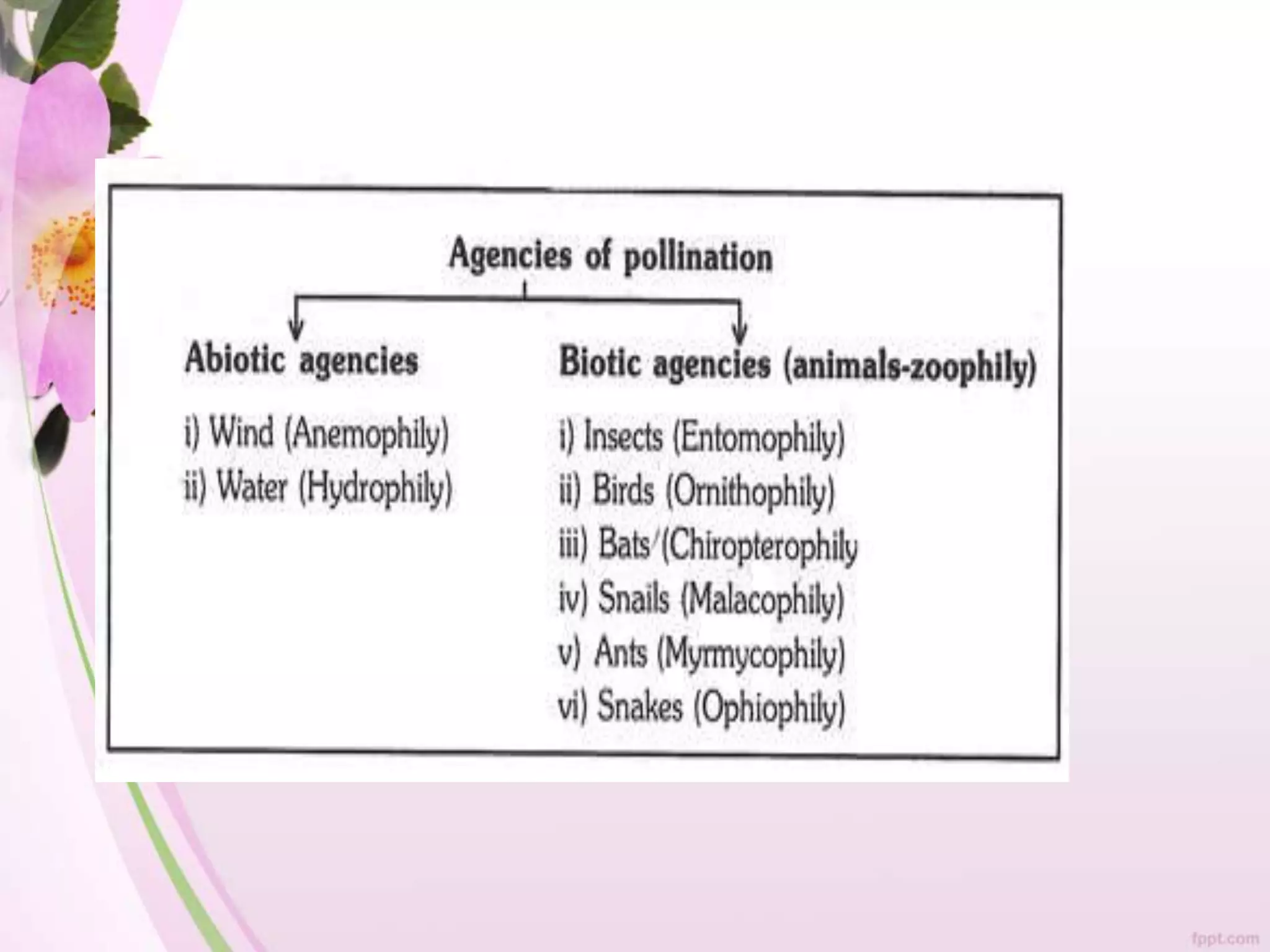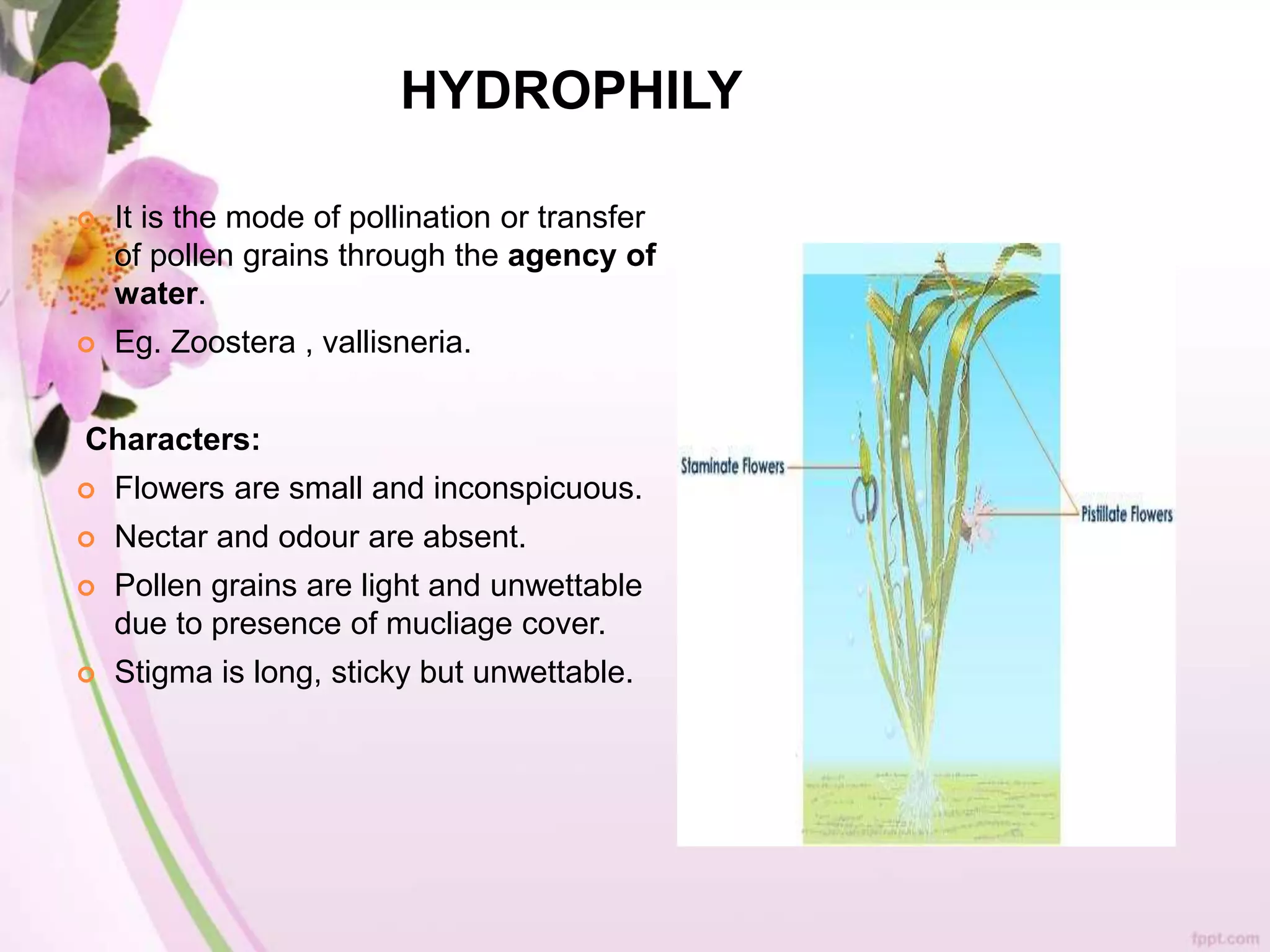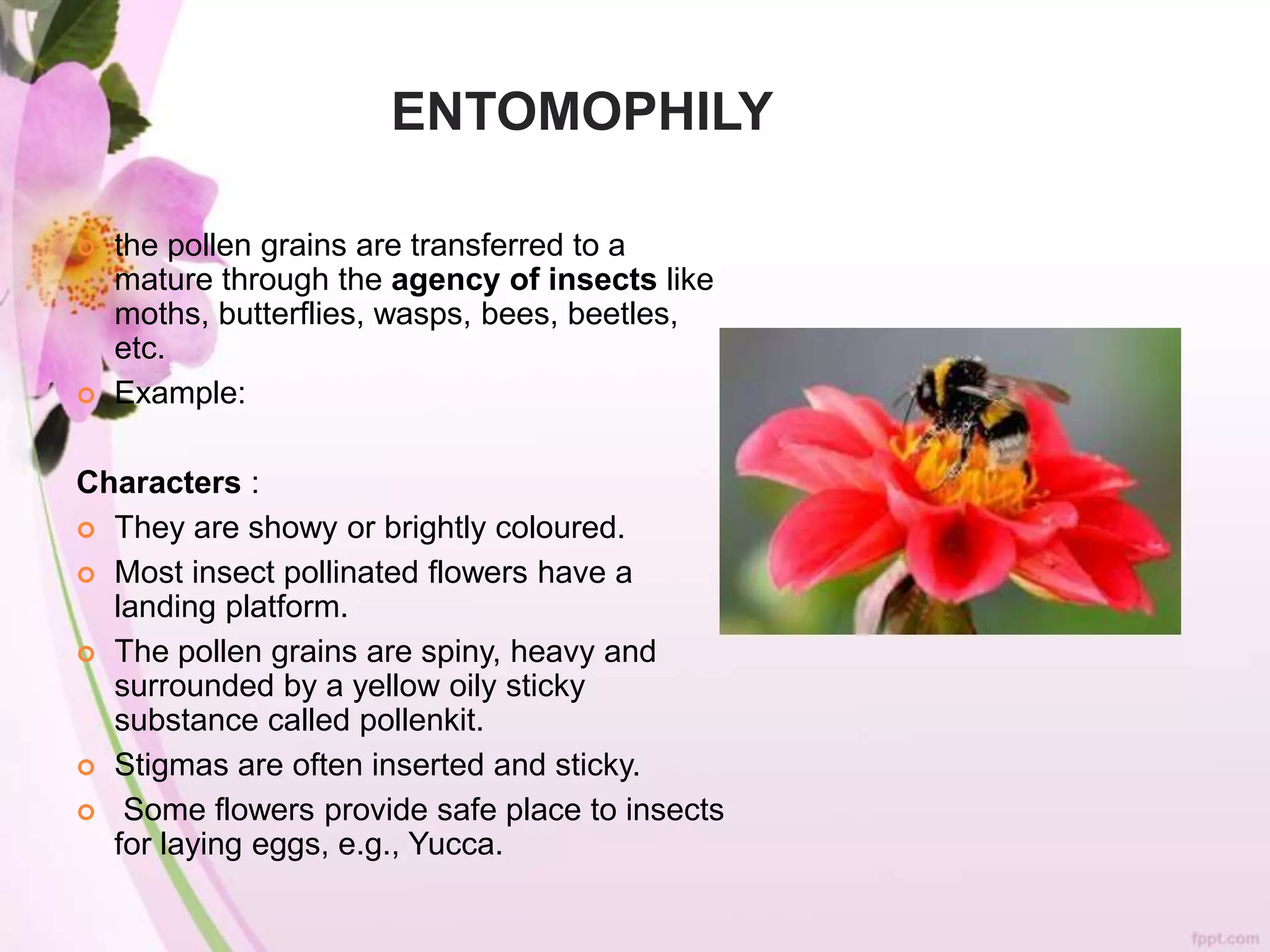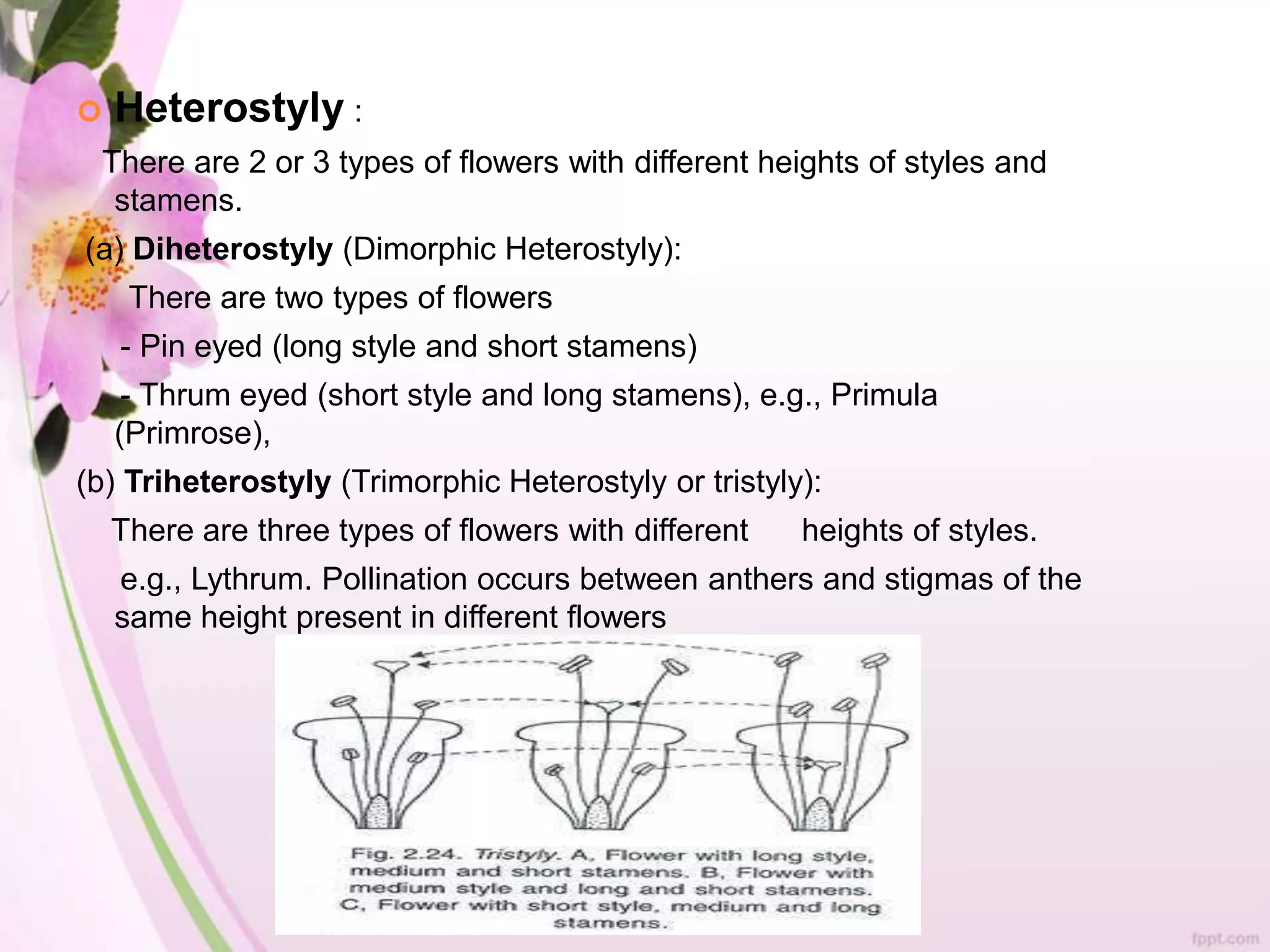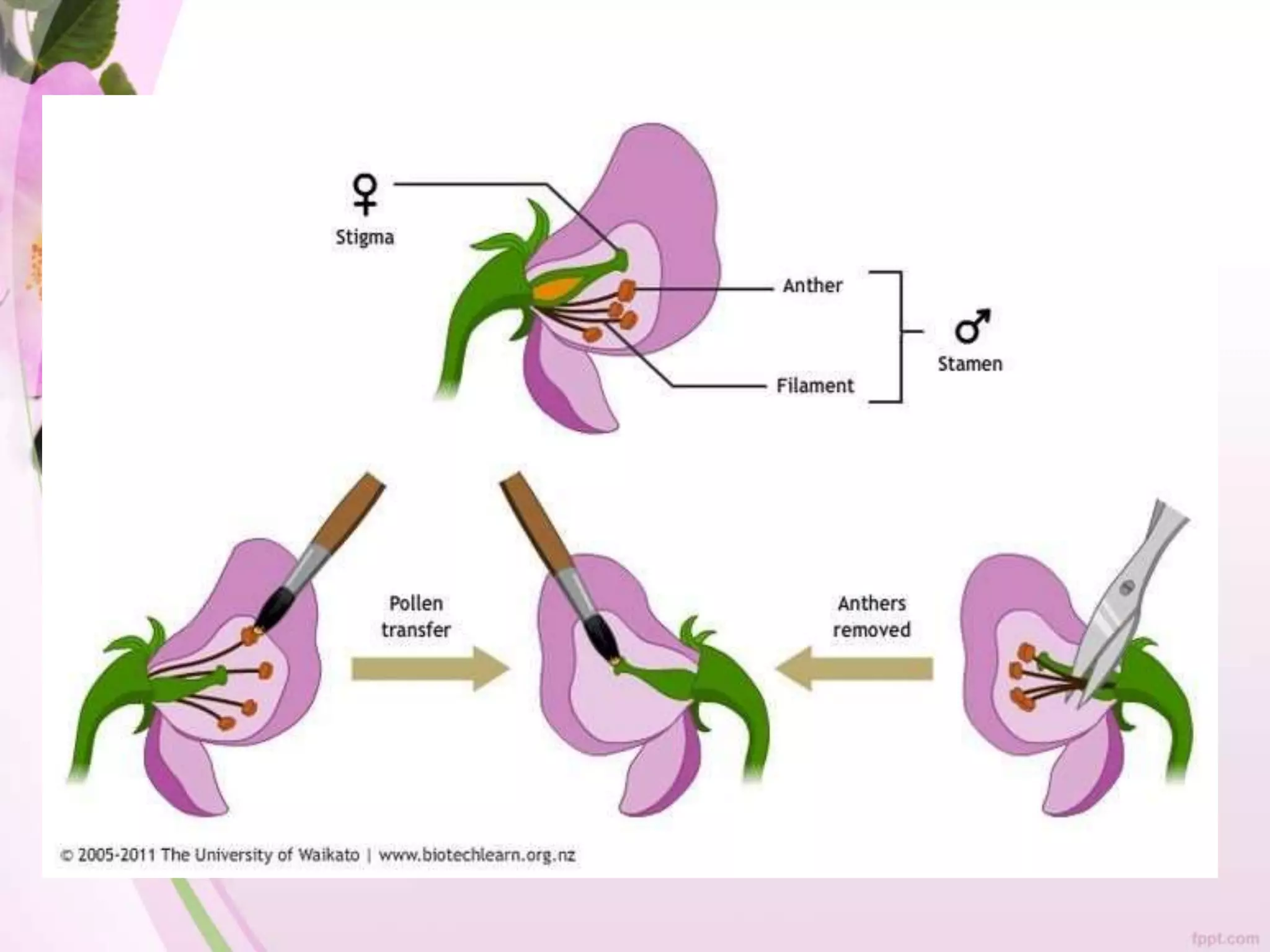This document discusses pollination, defining it as the transfer of pollen grains from the anther to the stigma of a flower. It describes the two main types of pollination - self-pollination and cross-pollination. Self-pollination involves the transfer of pollen grains within or between flowers on the same plant, while cross-pollination involves the transfer between genetically different plants. The document outlines various pollination mechanisms like anemophily, entomophily and ornithophily and discusses the adaptations of flowers to each. It also describes methods to ensure cross-pollination and the importance and process of artificial pollination as well as coevolution between flowers and

